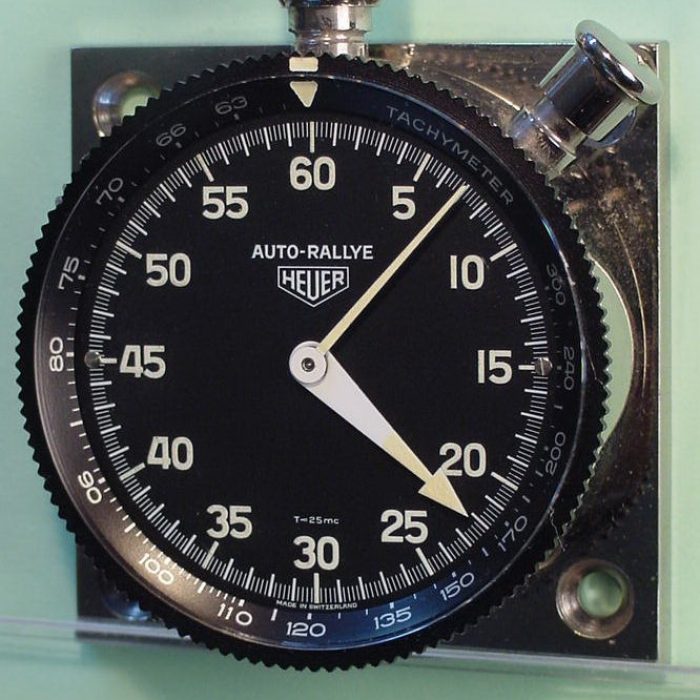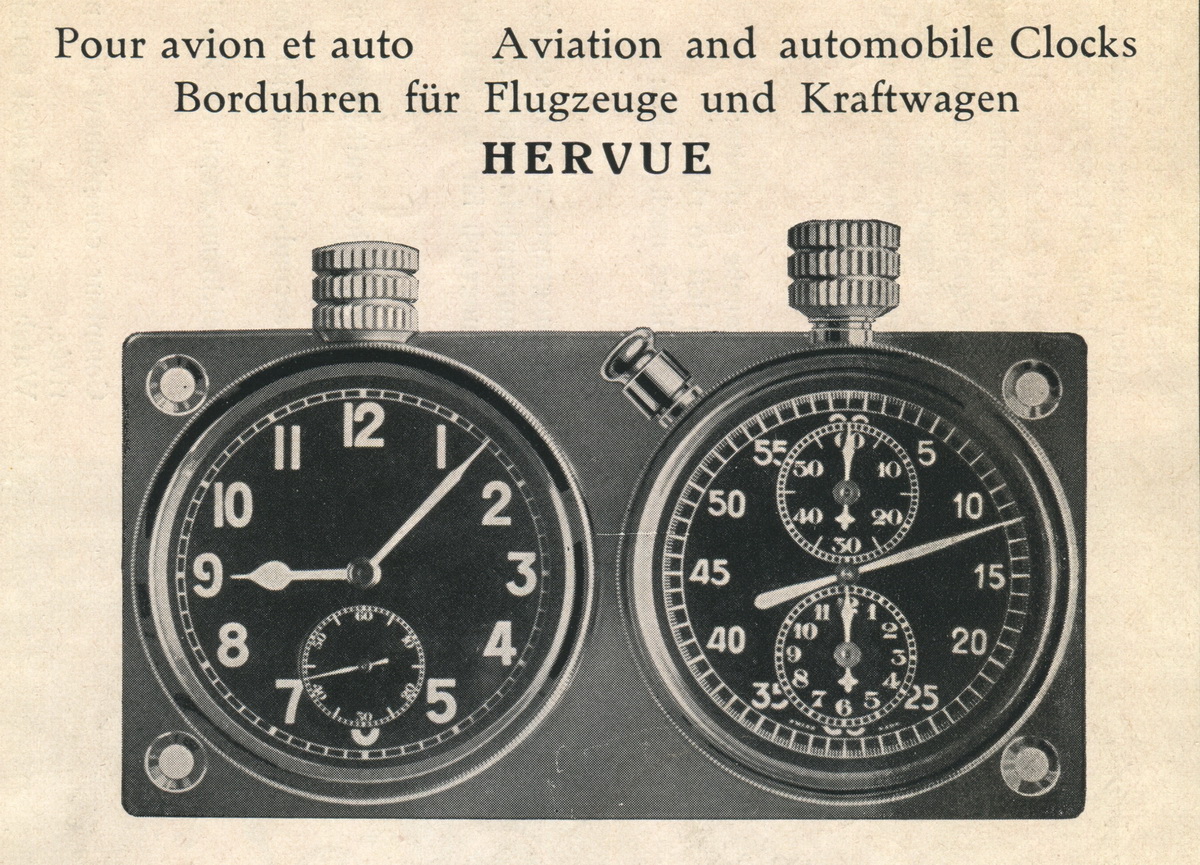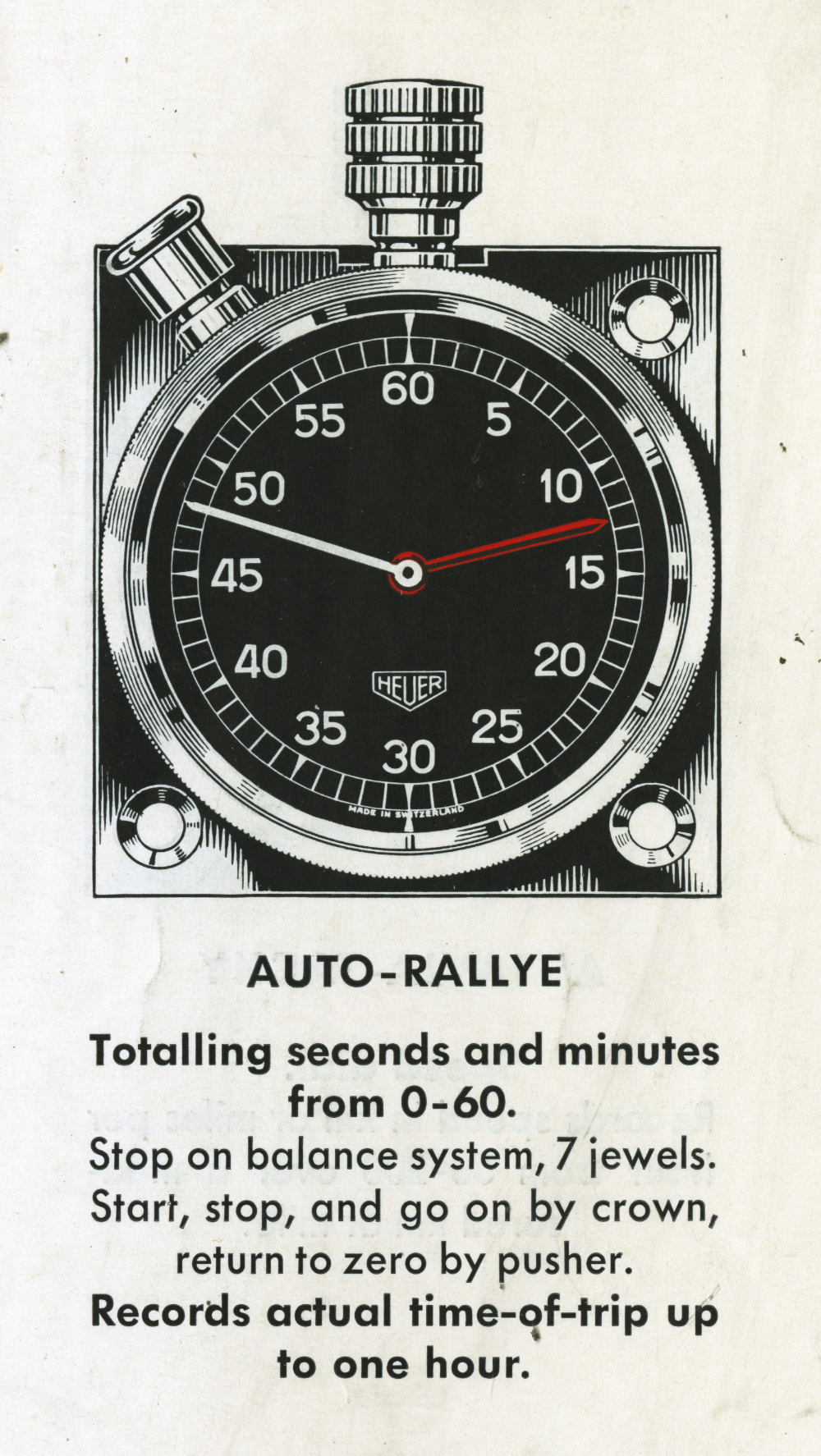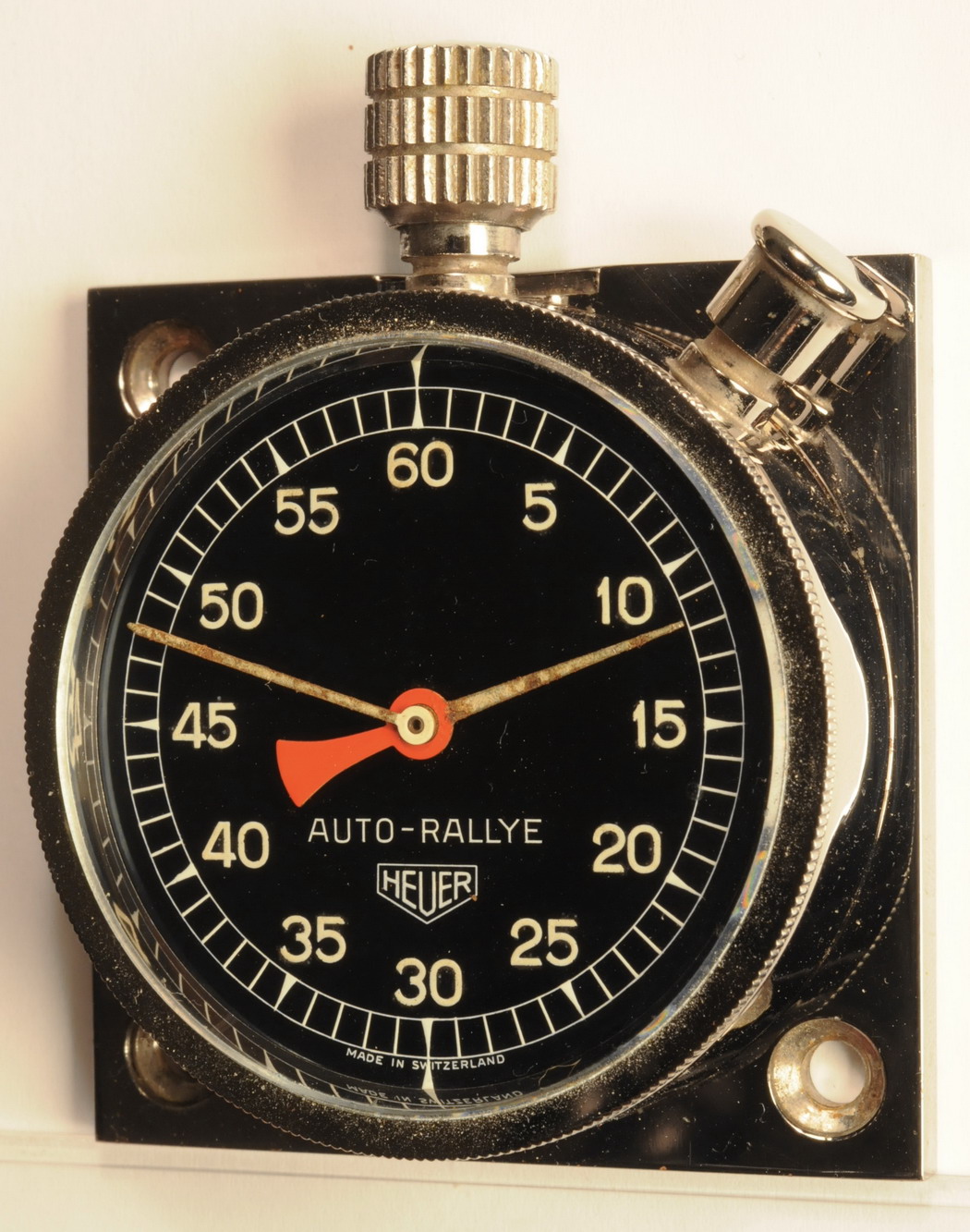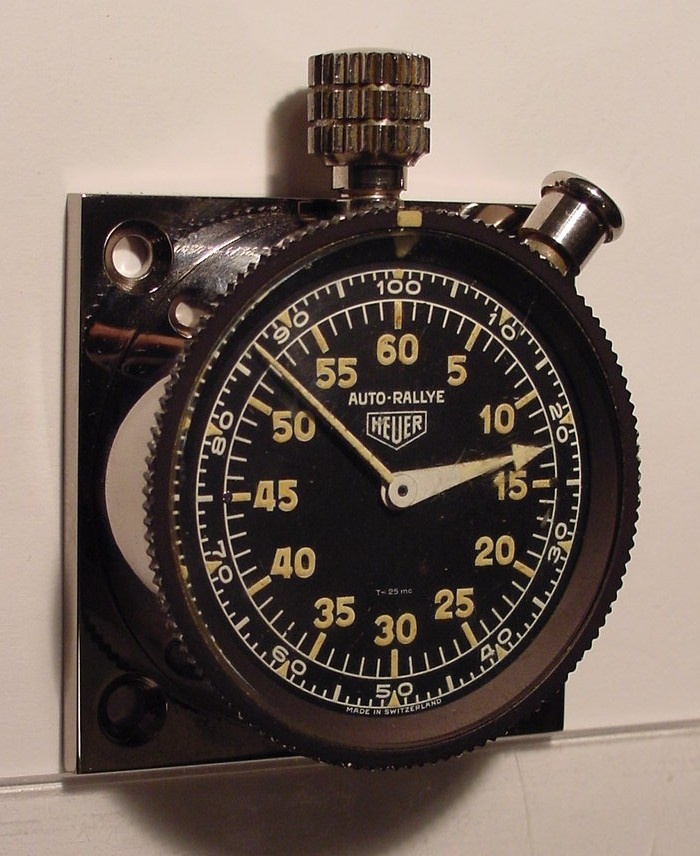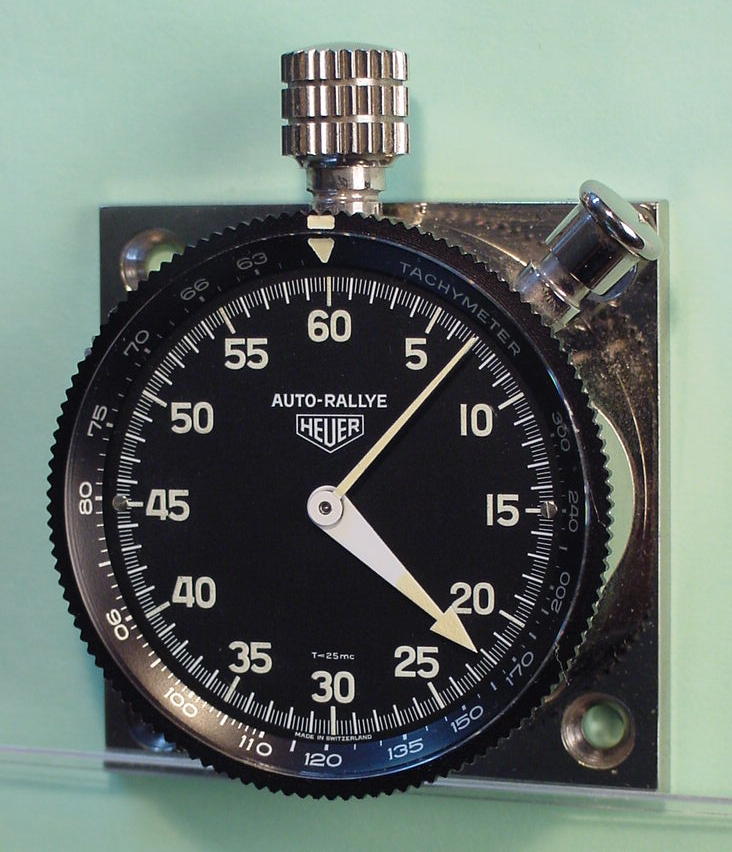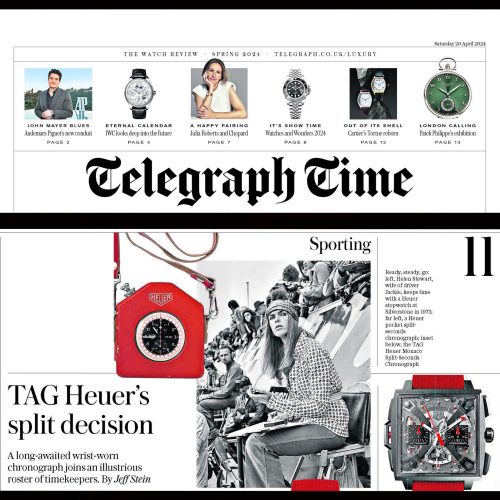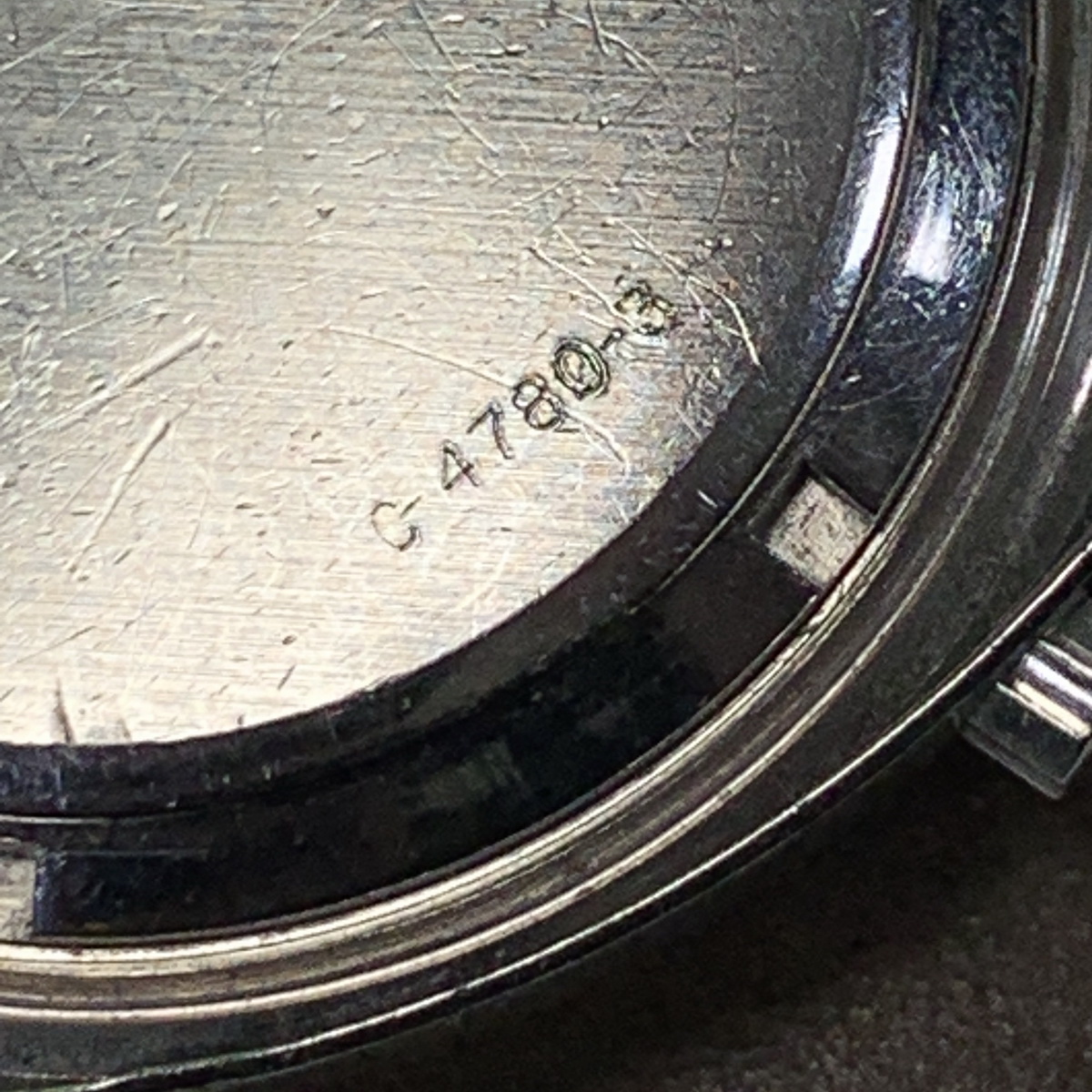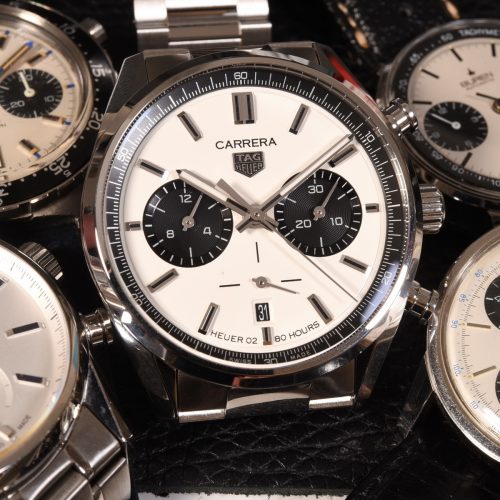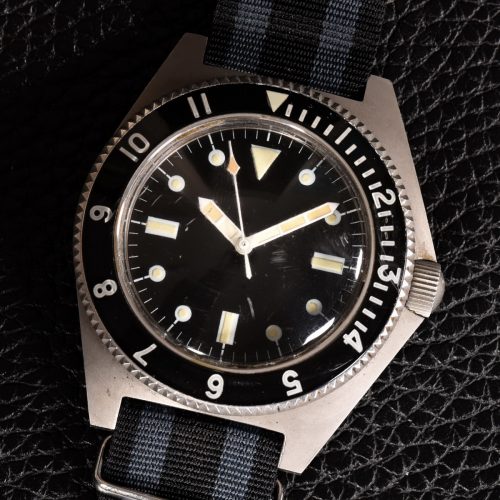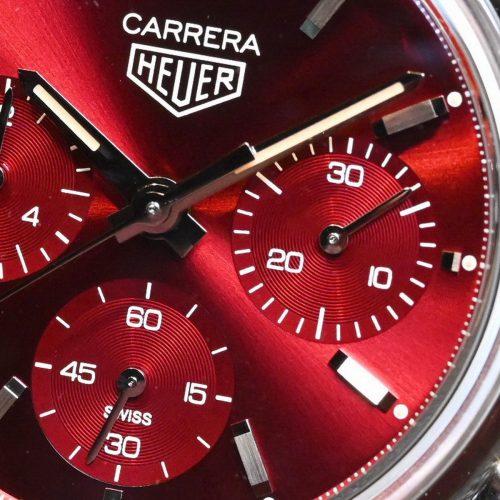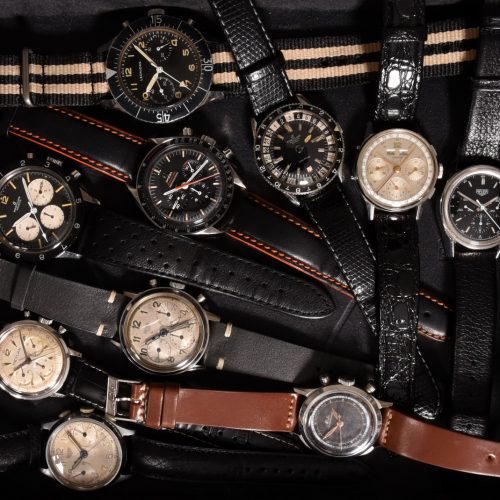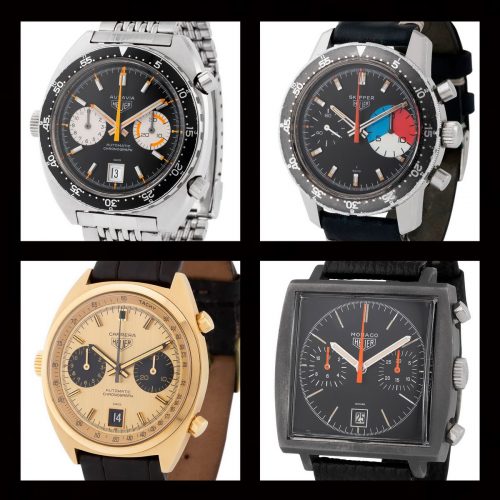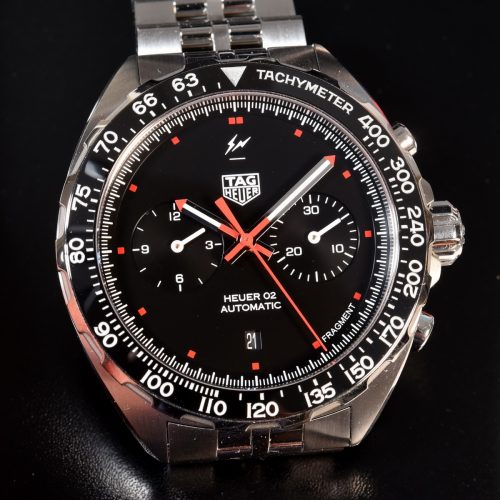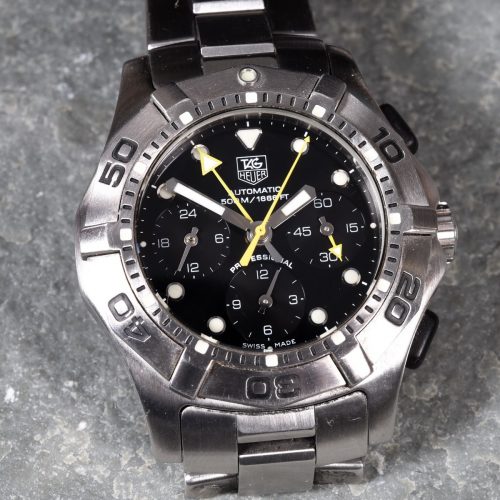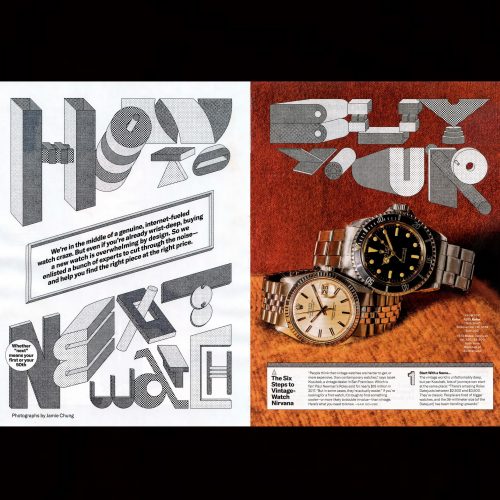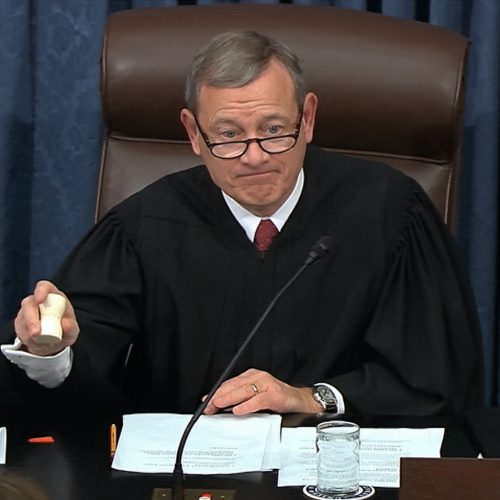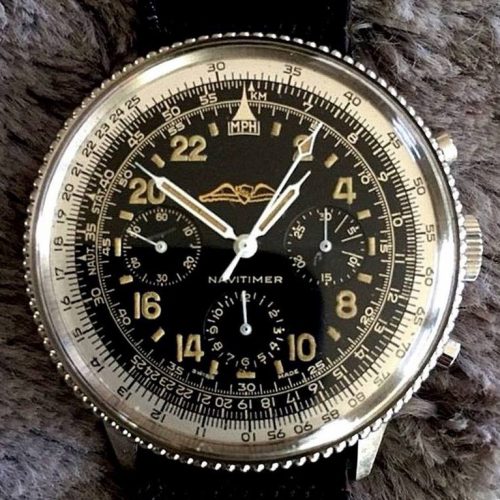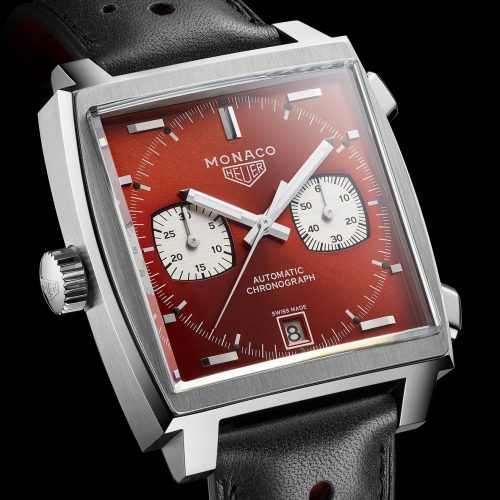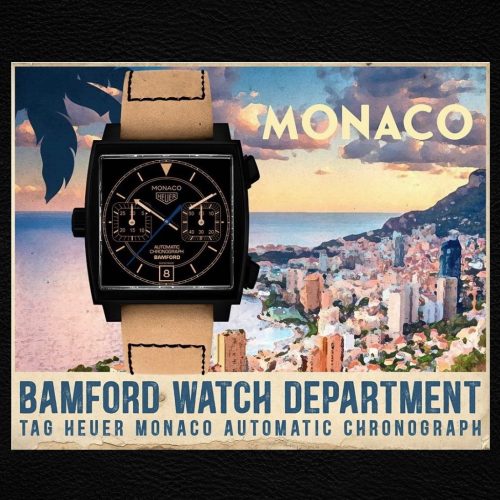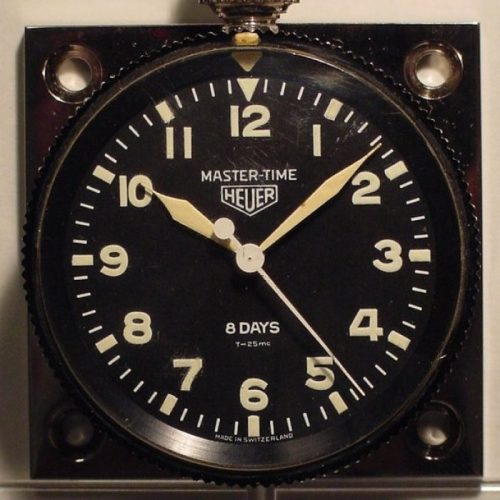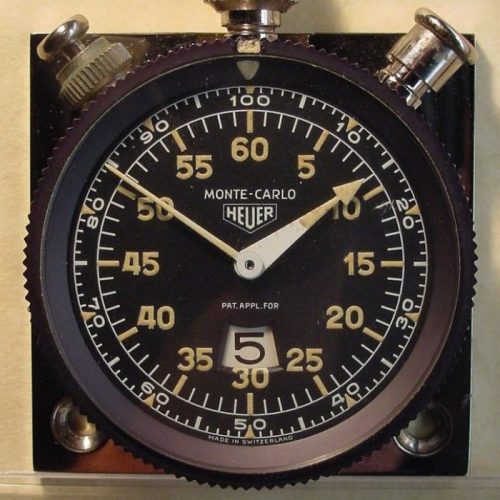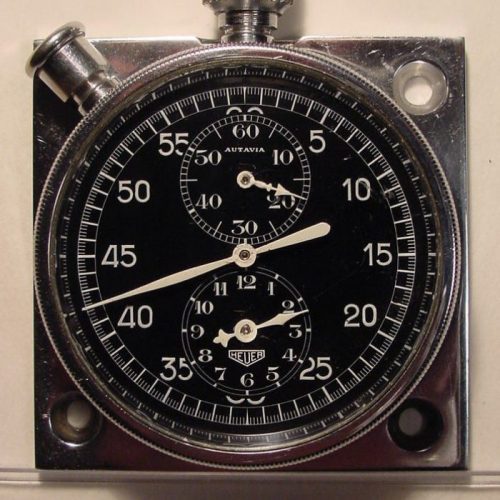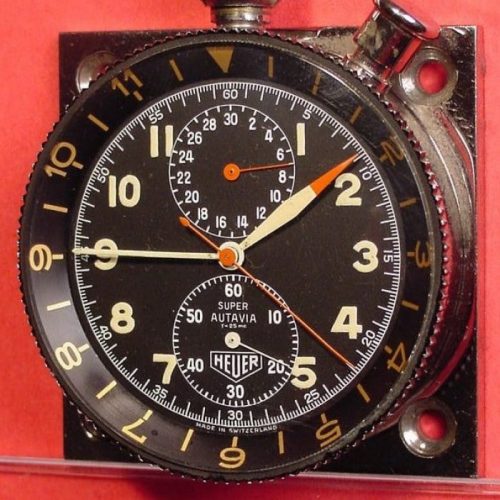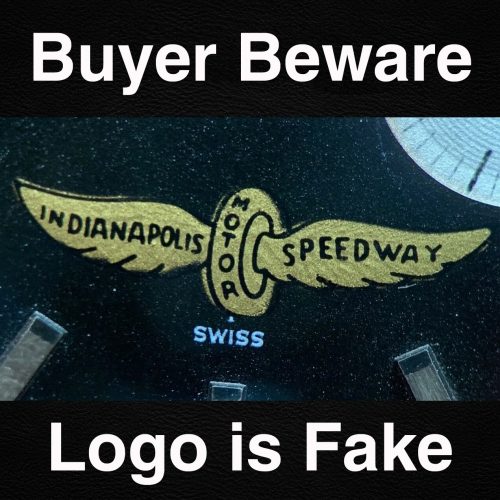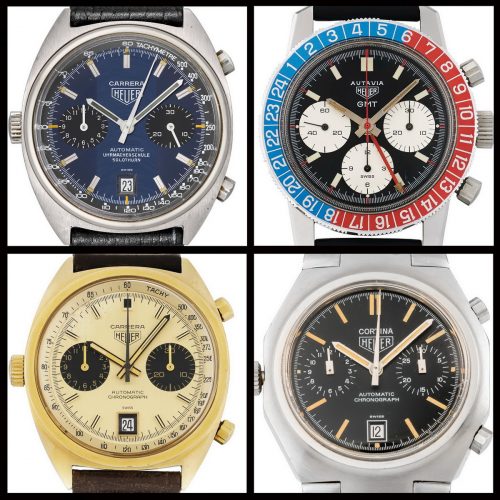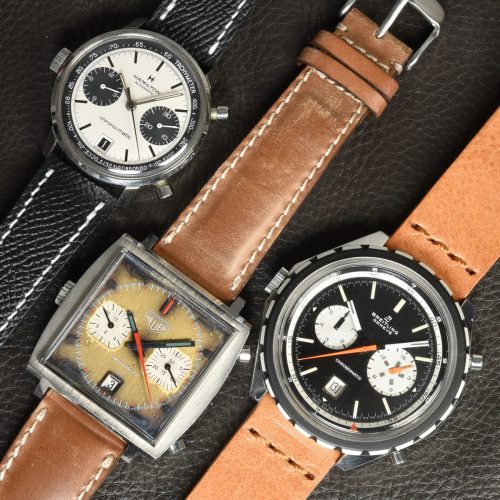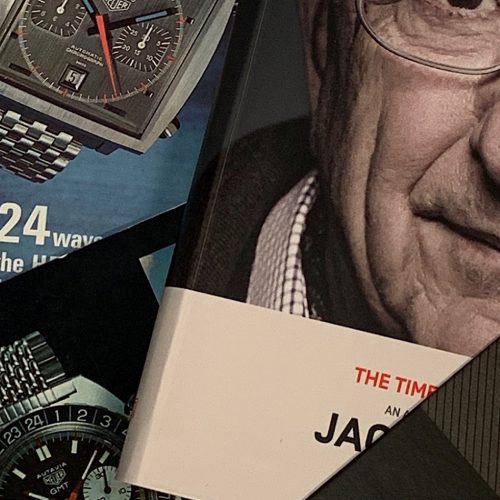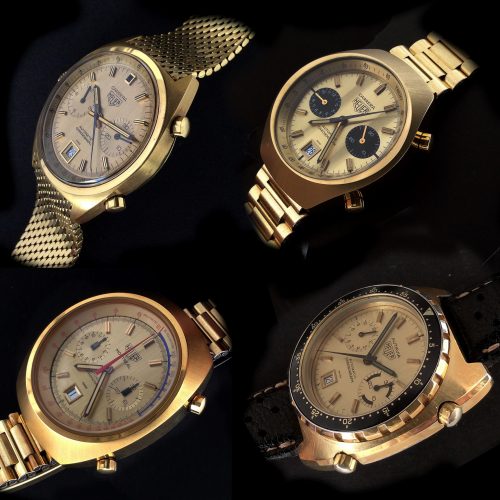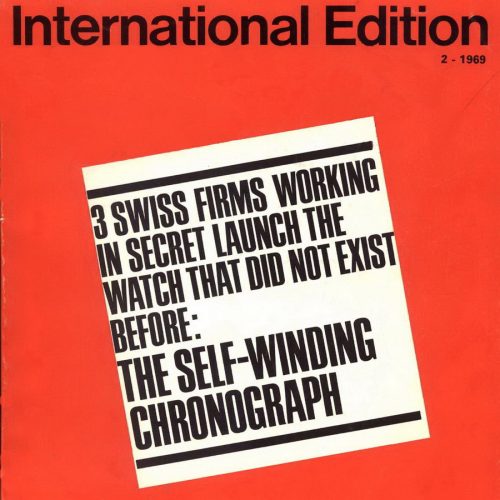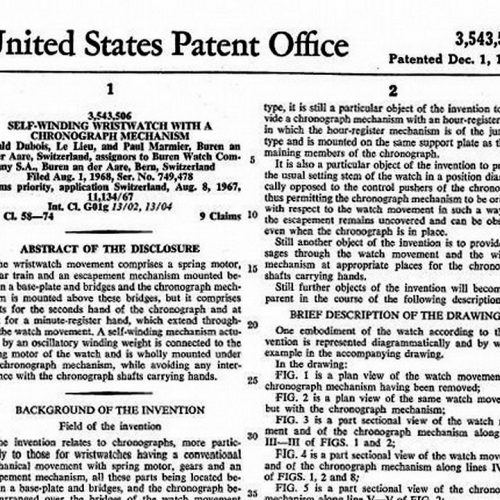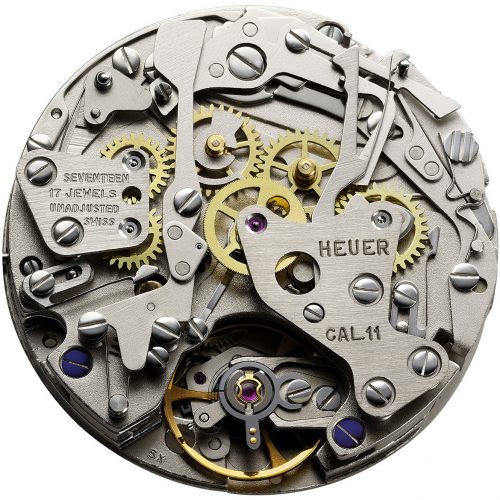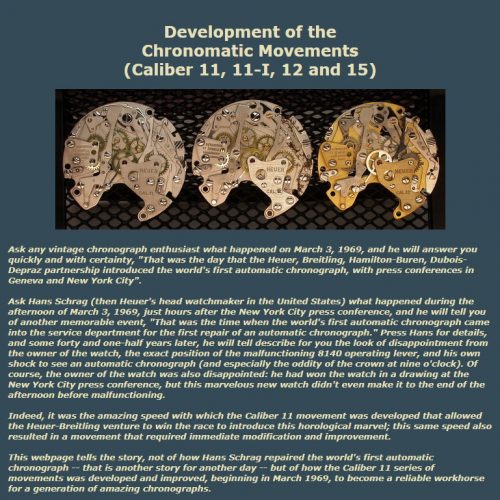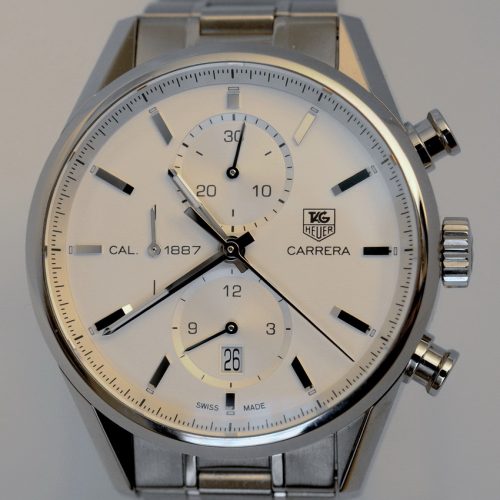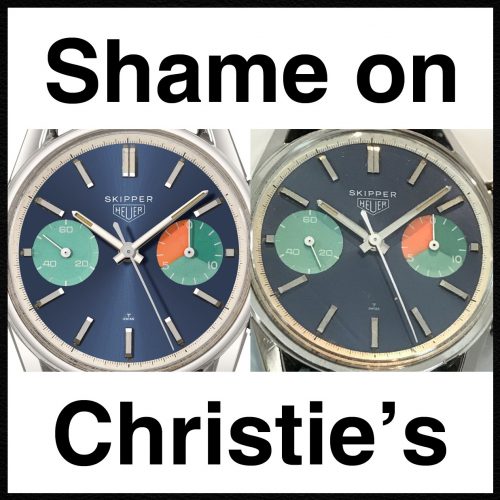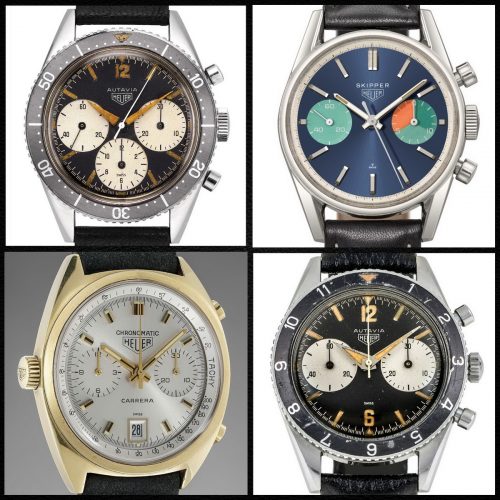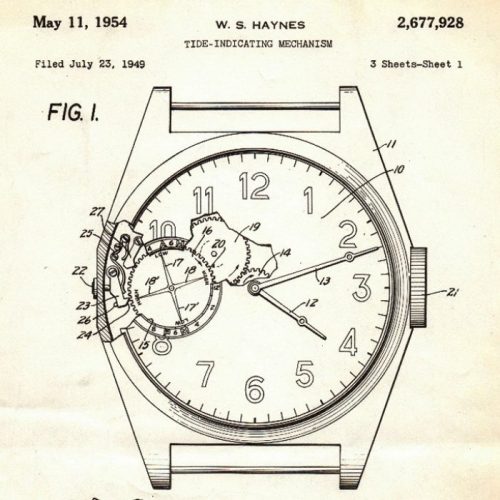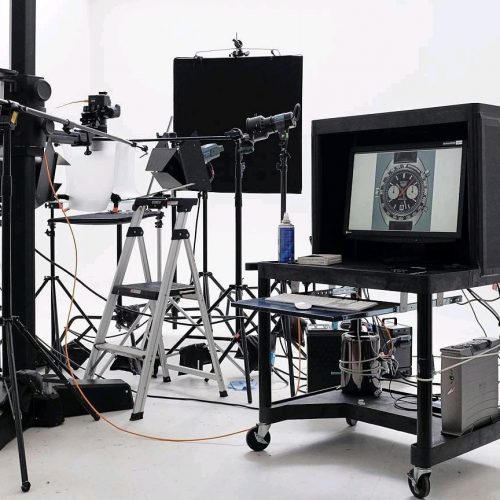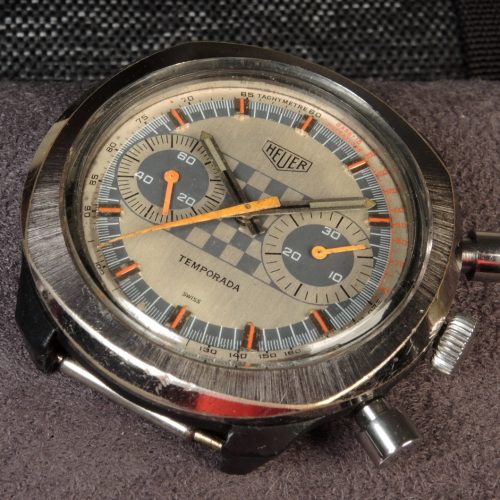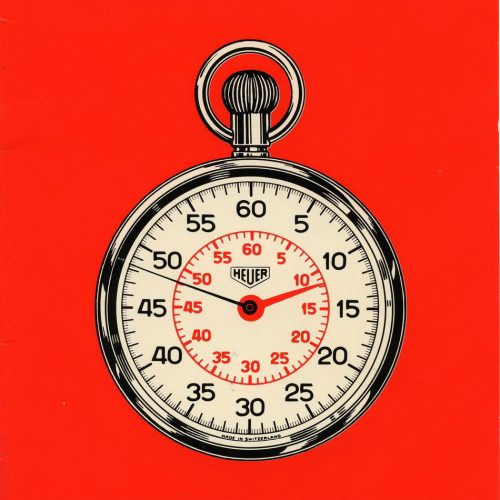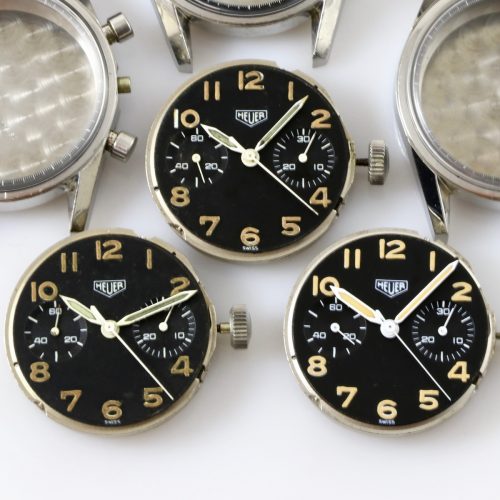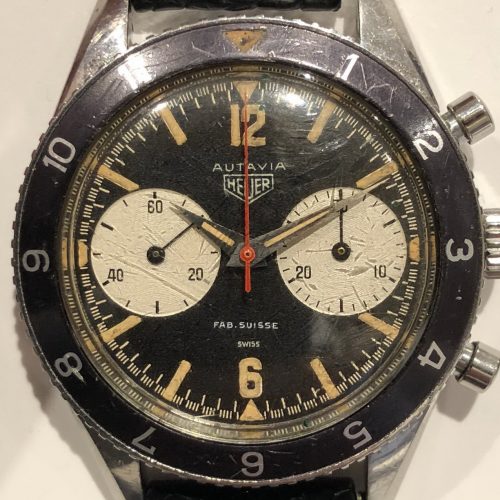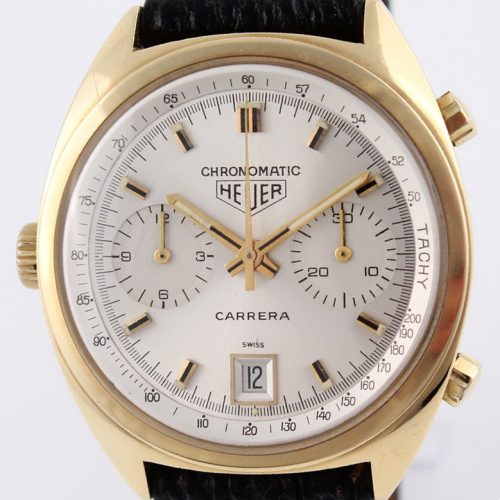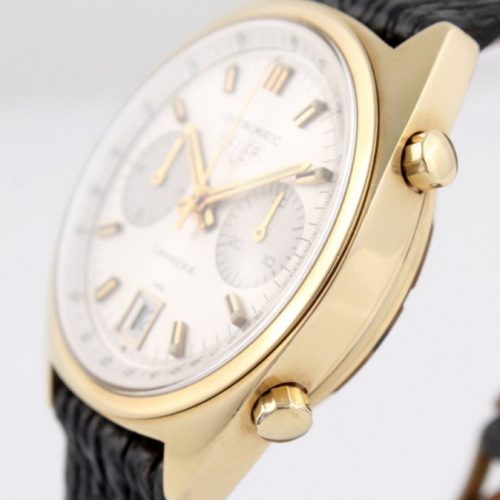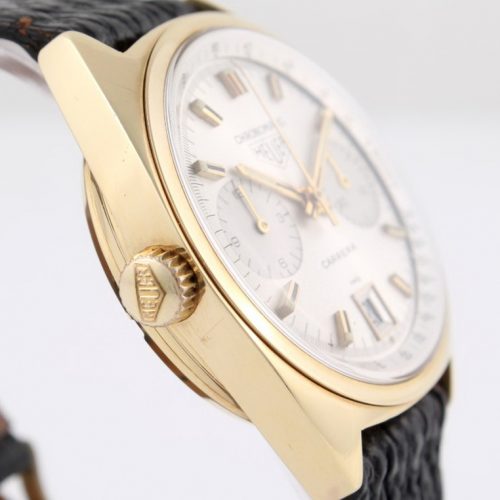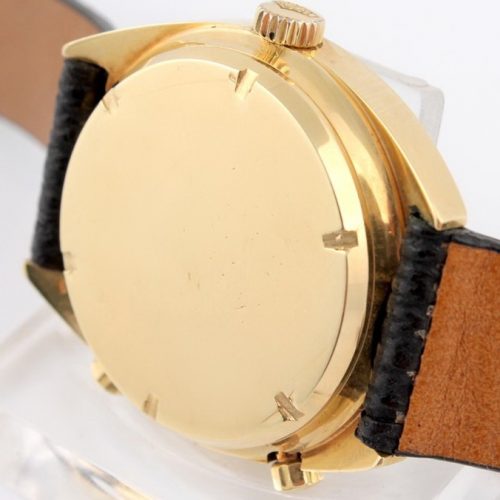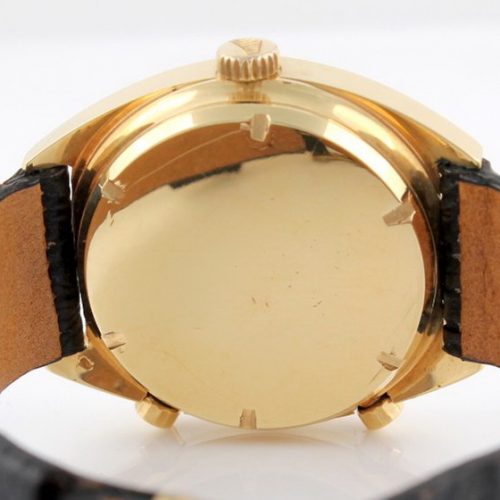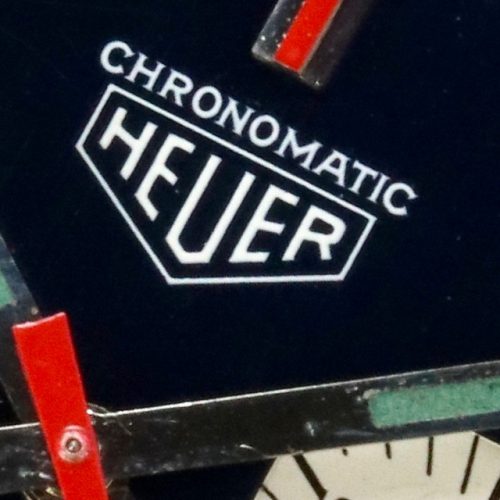From Heuer’s introduction of its first dashboard timers in the mid-1930s until the early 1950s, Heuer offered only two models of dashboard timers – there was a simple time-of-day clock (called a “Hervue” or “Hervue Junior”) and there was a stopwatch with 12-hour capacity (called the “Autavia). The pair of these two timers, mounted on a single back-plate was also called the “Hervue” or the “Hervue Pair”.
In the early 1950s, Heuer added a third model to its line-up of dashboard timers, a 60-minute stopwatch called the “Auto-Rallye”. The first models were listed as “Auto-Rallyes” in catalogs and other literature, but only had the “Heuer” logo on the dial. There was no model name on the dial.
Soon, a version of the Auto-Rallye appeared that was similar to this first model, except that the model name “Auto-Rallye” was now shown on the bottom of the dial, above the “Heuerr” shield. The minute-hand of the stopwatch had a distinctive red / orange fish-tail.
Both the early models of the Auto-Rallye stopwatch matched the Hervue clocks and Autavia stopwatches of the period, with a chromium-coated case and screw-on bezel. A single button (pusher) to the left of the crown controlled the Valjoux 62 movement; this button moved to the right side of the case when Heuer began using the A. Schild 1564 movement in the Auto-Rallye.
From 1958, the Auto-Rallyes were redesigned to match the other dashboard Heuers of the period (Master Time, Monte Carlo, Sebring and Super Autavia). With the A. Schild 1564 movement, the pusher remained to the right of the crown.
The final versions of the metal-cased Auto-Rallye (Reference 502.701), introduced circa 1967, used a thicker case and a Valjoux 7710 movement. This thicker case was the same profile as the cases used by the Master Time, Monte Carlo, Sebring and Super Autavia dashboard timers in this period.
The Master Time, Monte Carlo and Sebring dashboard timers moved to plastic cases circa 1976 and continued in production into the mid-1980s. The Auto-Rallye was never offered in a plastic case and made its last appearance in a Heuer catalog circa 1973.
